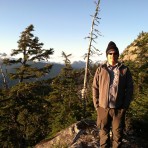“Towards a more concrete description of freeze-thaw” Dr. Alan Rempel
“Towards a more concrete description of freeze-thaw” Dr. Alan Rempel
Categories: Lectures and Seminars

A220 Loeb Building
1125 Colonel By Dr, Ottawa, ON
Contact Information
Natalia Fierro Marquez - Administrative Assistant to the Chair, 613-520-2600 x 2560, natalia.fierromarquez@carleton.ca
Registration
No registration required.
Cost
Free
About this Event
Host Organization: Department of Geography and Environmental Studies
More Information: Please click here for additional details.
Founders Seminar Presents Dr. Alan Rempel, Professor in the Department of Geological Sciences, University of Oregon.
Abstract:
Ice formation is a leading agent of physical weathering in nature and costly deterioration to the built environment. Such frost damage takes place when the pressure exerted against pore walls exceeds the cohesive strength and causes crack extension. Typically, this has little to do with the density change upon freezing, and happens instead because liquid is drawn towards growing ice crystals. The controls on this behavior in idealized systems have been examined in considerable detail, but parameterized measures used to gauge the intensity of frost damage to actual geological and engineered structures have lacked quantitative rigor. This talk introduces a new model designed to predict relative rates of frost weathering over the large spatial and temporal scales that are relevant for understanding landscape evolution.
Bio:
I grew up in the self-proclaimed "outdoor recreation capital of Canada” - less than 10 km behind me, in the direction of Mount Garibaldi on the left side of the attached photo. After earning Bachelors and Masters degrees at UBC, I went to Cambridge for my PhD, which focused upon various consequences of the phase behavior that causes frost heave. I continued to work on icy subjects through Postdoctoral stints at the University of Washington and Yale. That was followed by a brief stint lecturing at Harvard, where I began working on fault mechanics. Since taking my faculty position in Oregon, I’ve gained collaborators in volcanology, geomorphology, seismology, and building science - but my formative landscape was defined by ice.